Planning and preparation
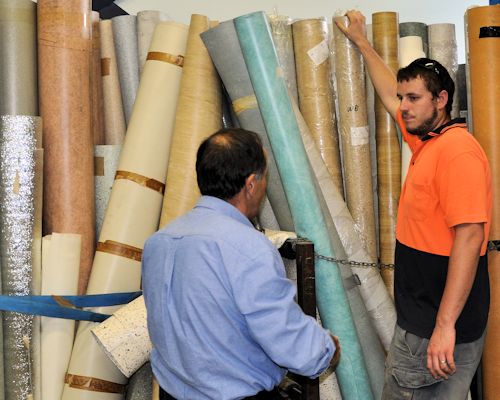 Audio for slide 1 (mp3 |6|KB)
Audio for slide 1 (mp3 |6|KB)
For many floor layers, a lot of the arrangements are made in advance by the company that's supplying the flooring products and handling the installation contract.
But even when you're working as a subcontractor, you still need to know what the arrangements are and confirm whether everything will be ready for you when you show up on-site to start the installation.

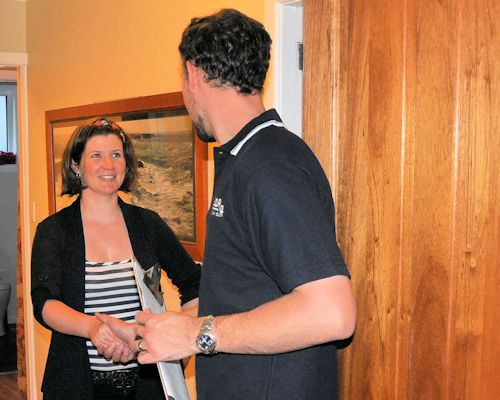 Audio for slide 3 (mp3 |6|KB)
Audio for slide 3 (mp3 |6|KB)
Site access and working conditions
One of the most important issues that need to be dealt with is access to the worksite and the condition it should be in when you arrive.
This includes organising a day that suits everyone, as well as making sure that no other trade work will be going on that could hold up your progress.
It also includes making arrangements in advance about who is responsible for moving existing furniture, appliances and old floor coverings.
For more details on these issues, follow the links below.
Dealing with the client (Lay flat vinyl)
Issues to consider' (Planning and costing)

 Audio for slide 4 (mp3 |6|KB)
Audio for slide 4 (mp3 |6|KB)
Health and safety
Professional floor layers take safety very seriously - because they know that a happy, healthy life is far more valuable than a bit of time saved by taking shortcuts or not following safe procedures.
We've dealt with various aspects of health and safety throughout this series of learner guides. Below is a summary of the main topics relevant to resilient floor laying that are covered in other guides.
You should go back to these lessons if you need to refresh your memory on the details.

Manual handling - Manual handling (Safety at work)
Knee problems - Looking after your knees (Safety at work)
Dust and fumes - Health and safety (Subfloor coatings and toppings)
Skin contact with hazardous substances - Health and safety (Subfloor coatings and toppings)
PPE - Personal protective equipment (Safety at work)
Knife safety - Health and safety (Lay flat vinyl)
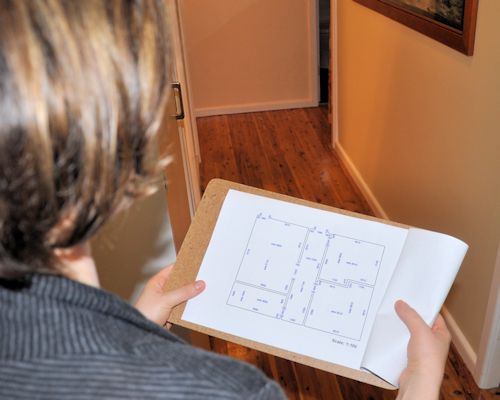 Audio for slide 5 (mp3 |6|KB)
Audio for slide 5 (mp3 |6|KB)
Documentation
The main document that sets out the specifications of a flooring project is the floor covering plan.
Some contracting companies give their installers a job sheet, which contains most of the information contained in the floor covering plan, but also provides details relating to specific products used and arrangements that have been made with the client.
For more information about these documents, follow the links below.
Floor covering plans (Planning and costing)
Documentation (Lay flat vinyl)

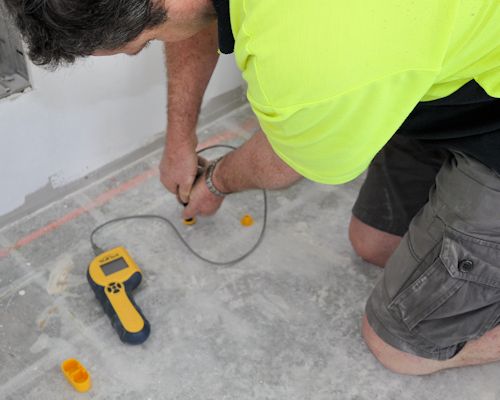 Audio for slide 6 (mp3 |6|KB)
Audio for slide 6 (mp3 |6|KB)
Subfloor assessment
When something goes wrong with a finished floor, more often than not the problem can be traced back to the condition of the subfloor. Sometimes a problem only becomes obvious months or even years after the installation was completed.
But as a professional installer, you'll still be liable for the cost of repairs if it can be proved that you didn't properly assess the subfloor and deal with any issues that you were responsible for at the time.
Because this is such a crucial topic, we've revisited it in several units. However, the most comprehensive coverage is in the units below.
Inspecting and testing subfloors

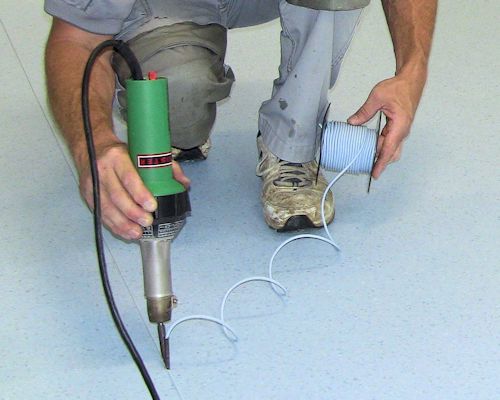 Audio for slide 7 (mp3 |6|KB)
Audio for slide 7 (mp3 |6|KB)
Tools and equipment
The tools you'll need for any particular project will depend on the specifications of the job and the site conditions you're faced with.
We talked about the basic range of hand tools required in the lesson shown below.
So in this unit, we'll move on to the specific tools needed for heat welding and other specialised tasks.
Tools and equipment (Lay flat vinyl)


Learning activity
Audio 8 (mp3 |6|KB)Can you remember what the Australian Standard says about the maximum relative humidity (RH) allowed in a concrete subfloor?
If you're not sure of the answers, look back in Inspecting and testing subfloors, or go straight to AS 1884.
- What is the maximum RH allowed in a slab when measured with a surface mounted hood?
- What is the maximum RH allowed when measured with an in-situ probe?
- What installation procedure can you follow if the RH is above these levels?






